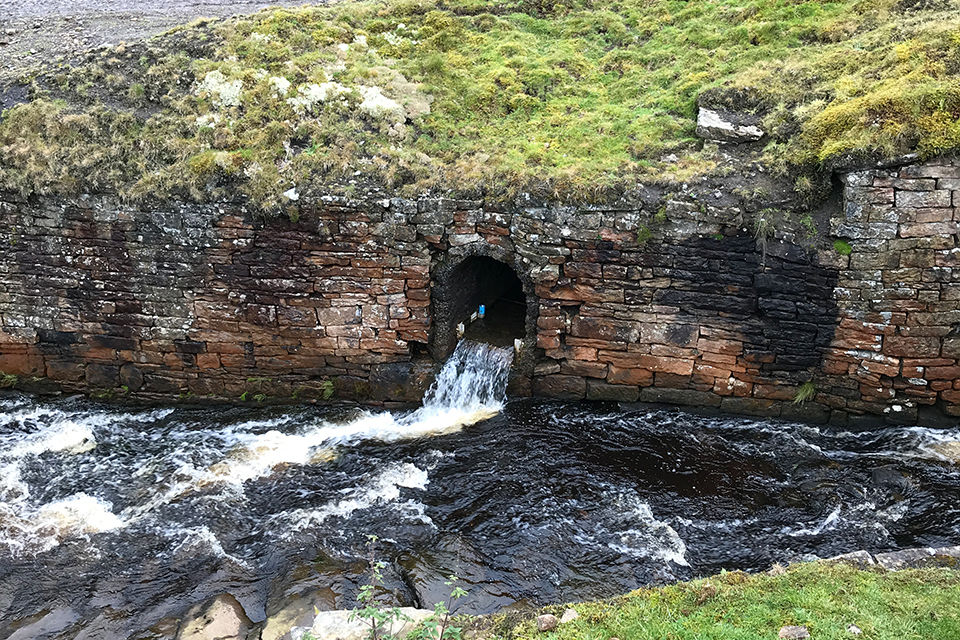Barney Craig mine water treatment scheme: reducing pollution from historical metal mining
Published 3 November 2020
Applies to England
Cleaning up water pollution from abandoned metal mines is identified as a priority for the Department for Environment Food & Rural Affairs in the government’s 25 Year Environment Plan and to deliver the statutory Northumbria River Basin Management Plan.
1. The mining history of the Barney Craig site
Mines operated in the West Allen valley since the 1700s and construction of the Barney Craig Horse level commenced around 1760.
Mines in the upper West Allen were worked for lead, barytes, fluorspar and zinc. Mine entrances and associated mineral processing sites were located at Coalcleugh at the head of the river, and at Carrshield, which were the Barney Craig and Scraithole mines.
Most mining activity took place between the late 1700s and 1920 although a small amount of mineral was extracted from Scraithole mine in the 1980s.
2. Metal mine impacts on water quality in the area
More than 40km of the River West Allen and the River South Tyne are polluted by zinc, cadmium and/or lead which harm fish and river flies. These metals ultimately collect in sediments in the Tyne estuary.
Monitoring by the Environment Agency shows that the most significant source of zinc and cadmium is the Barney Craig adit.

The Barney Craig adit
This abandoned mine water drainage tunnel is part of the historical Carrshield lead mine site. Most of the lead pollution comes from rain falling on the abandoned mine wastes in the upper catchment, such as the Carrshield and Coalcleugh sites.
The overall status of the waterbodies in the River West Allen is ‘moderate’. This is based on biological elements, such as fish and invertebrates and also because the river water quality fails the Environmental Quality Standards (EQS) for zinc, cadmium or lead.
Monitoring carried out by the Environment Agency shows that the severity of the metal pollution is highest during lower flows when there is less dilution of the mine water.
3. The average flow of the mine water at Barney Craig
The flow of mine water depends on rainfall and varies between 10 to 60 litres a second, with an average of about 20 litres a second.
Ideally, all the mine water would be treated, however, since the most significant improvement in water quality will be seen when the adit and river flows are lower, it is still worth treating a portion of the flow.
4. Benefits of remediating the Barney Craig mine water discharge
Modelling of treatment scenarios for the Barney Craig discharge suggest that treating 20 litres a second would improve water quality in at least 34km of the River West Allen, River Allen and the River South Tyne.
The Barney Craig mine water is not the only source of metals to the downstream waterbodies, but it is the most significant contributor.
Treating this discharge would provide increased improvements to water quality and decrease the overall metal flux in future years as metals would not continue to accumulate in the river sediments.
This means less metals would be released from the sediments during higher river flows, meaning less metals would be transported down river to the Tyne estuary as well.

The Barney Craig adit flowing into the river
5. Treatment technology and land area required
The proposed scheme would comprise a number of compost-based treatment ponds, similar to those constructed in 2014 at the Force Crag mine water treatment scheme, which is situated in the Lake District National Park on land designated as a Scheduled Monument, a Site of Special Scientific Interest and a Special Area of Conservation.
View details of the Force Crag mine water treatment scheme
The open water of the treatment ponds would be followed by a constructed wetland to polish the mine water before returning it to the river.
We have carried out investigations at several potential locations to build the treatment scheme and will be doing more surveys and investigations near the Barney Craig adit. We intend to share our findings with the public and other stakeholders early in 2021.
We considered the following constraints when reviewing potential treatment site locations:
- land area required for treatment
- local planning constraints
- land ownership/current land use
- site topography and slope angle
- site position/distance from discharge
- flood risk
- environmental designations
- engineering feasibility
